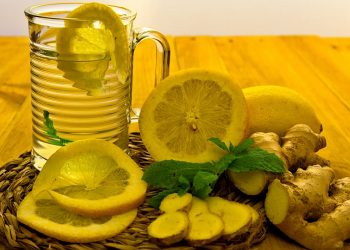You wake up stiff. Your knees creak like old wooden stairs. Every step reminds you—this body’s not what it used to be. But what if I told you that your relief might be sitting in your kitchen, not your medicine cabinet?
Diet and botanicals for osteoarthritis are not just trends from the wellness world. They are time-tested tools, backed by science and generations of wisdom, that can actually reduce joint pain, lower inflammation, and help you move better—without harsh side effects.
And no, this isn’t just about “eating healthy.” This is about targeted nutrition and plant-based power that can soothe your joints from the inside out.
Contents
- 1. Turmeric Isn’t Hype—It’s a Joint-Saving Hero
- 2. Omega-3s: The Anti-Inflammatory Armor
- 3. Leafy Greens: Nature’s Joint Protectors
- 4. Ginger—Spicy Relief for Achy Joints
- 5. Collagen & Bone Broth—Support Your Structure
- 6. Botanicals That Work Like Gentle Warriors
- 7. The Inflammatory Foods to Avoid at All Costs
- Real-Life Success: How Lisa Reclaimed Her Mobility
- Best Practices to Start Today
- The Bottom Line
- FAQs
1. Turmeric Isn’t Hype—It’s a Joint-Saving Hero
Turmeric contains curcumin, a natural anti-inflammatory compound that has shown remarkable results in clinical trials. It can reduce swelling, pain, and stiffness, especially in the knees—where osteoarthritis loves to camp out.
How to use it:
-
Add turmeric to soups, stews, or smoothies.
-
Take a high-quality curcumin supplement with black pepper (which boosts absorption).
-
Sip golden milk—turmeric + almond milk + honey—for soothing nighttime relief.
Real Talk: In one study, people with knee osteoarthritis who took 500 mg of curcumin daily reported relief equal to ibuprofen—without the digestive issues.
2. Omega-3s: The Anti-Inflammatory Armor
You’ve probably heard of omega-3 fatty acids—found in fatty fish like salmon, sardines, and mackerel—but do you know they can actually block the enzymes that cause joint inflammation?
Why it works:
Omega-3s reduce production of inflammatory chemicals like prostaglandins and cytokines, which are often overactive in people with osteoarthritis.
Your action plan:
-
Eat fatty fish at least twice a week.
-
Consider a quality omega-3 supplement (EPA & DHA).
-
Add ground flaxseed or chia to your breakfast.
Bonus tip: Combine omega-3s with turmeric for a double-hit anti-inflammatory combo.
3. Leafy Greens: Nature’s Joint Protectors
Spinach, kale, collard greens—they’re not just for your heart. They’re full of vitamin K, calcium, and antioxidants that help protect cartilage and bone.
What makes them great:
-
Vitamin K supports cartilage health.
-
Antioxidants like lutein and beta-carotene fight oxidative stress in joints.
Daily ritual: Toss spinach into smoothies or sauté kale with garlic and olive oil.
4. Ginger—Spicy Relief for Achy Joints
If turmeric is the hero, ginger is its sidekick. This spicy root has been shown to significantly reduce pain in osteoarthritis patients over time.
Try this:
-
Brew fresh ginger tea with lemon.
-
Add grated ginger to stir-fry, soup, or salad dressings.
-
Take it as a supplement (standardized to 250 mg of gingerol per dose).
In one study, 63% of patients with knee osteoarthritis saw reduced pain after ginger extract supplementation. That’s not folklore—that’s fact.
5. Collagen & Bone Broth—Support Your Structure
As we age, our collagen—the building block of joints—naturally declines. Boosting it through food or supplements can support joint structure and reduce osteoarthritis symptoms.
Options:
-
Sip bone broth regularly (rich in gelatin and amino acids).
-
Use collagen powder in smoothies, coffee, or oatmeal.
-
Choose hydrolyzed collagen for better absorption.
Hot tip: Combine collagen with vitamin C (like citrus or bell peppers) to maximize its synthesis in the body.
6. Botanicals That Work Like Gentle Warriors
Several herbs have stood the test of time—and now science is catching up.
Try these botanical allies:
-
Boswellia (Frankincense): Reduces joint swelling and improves mobility.
-
Devil’s Claw: Known for pain relief comparable to pharmaceutical NSAIDs.
-
Willow Bark: The original aspirin source—natural pain relief without harsh side effects.
-
Cat’s Claw: An Amazonian vine with anti-inflammatory compounds.
You can find these in capsules, tinctures, or teas—but always choose standardized extracts and consult your healthcare provider.
7. The Inflammatory Foods to Avoid at All Costs
You can’t out-supplement a bad diet. What you eliminate is just as powerful as what you add.
Biggest offenders for joint inflammation:
-
Refined sugar
-
Processed meats
-
Trans fats and fried foods
-
Excess alcohol
-
Refined carbs (white bread, pastries)
These foods increase C-reactive protein (CRP), a marker of inflammation directly tied to osteoarthritis progression.
Eat clean, feel clean. Your joints will thank you.
Real-Life Success: How Lisa Reclaimed Her Mobility
Lisa, 58, was told she’d need knee replacement surgery within a year. She was in constant pain, relying on ibuprofen just to get through her shift as a nurse.
Instead of surgery, she committed to an anti-inflammatory diet, added turmeric and omega-3s, and drank bone broth daily.
Six months later, she reported:
-
60% less joint pain
-
No more daily painkillers
-
Better sleep and mobility
Her story is not rare—it’s a reminder: Your plate has power.
Best Practices to Start Today
Want results? Stay consistent. Here’s how to make it doable:
-
Plan your meals around anti-inflammatory ingredients.
-
Keep a food journal to spot flare-up triggers.
-
Use herbs as medicine—think ginger tea or turmeric capsules.
-
Pair supplements wisely (like omega-3s with fat for absorption).
-
Get professional guidance from a nutritionist or naturopath.
The Bottom Line
Diet and botanicals for osteoarthritis are more than complementary—they can be transformative.
With the right foods, herbs, and lifestyle tweaks, you can reduce joint pain, improve flexibility, and live with less limitation. It’s not a magic pill—it’s a daily choice. But those daily choices? They add up to big change.
Your journey toward pain relief doesn’t have to start with a prescription—it can start with your next meal.
FAQs
What’s the best botanical for osteoarthritis?
Turmeric, especially curcumin extract, is widely considered the most effective, supported by research and real-world results.
Can diet alone cure osteoarthritis?
It can’t cure it, but a targeted anti-inflammatory diet can significantly reduce symptoms, slow progression, and enhance quality of life.
How long before I see results from botanical supplements?
Some people report benefits within 2–4 weeks, but consistent use over 2–3 months is usually needed for maximum effect.
Can I use diet and botanicals along with medication?
Absolutely—but always consult your doctor to avoid interactions, especially with herbs like turmeric or willow bark.
Keep going, even when it’s hard. Every small step counts toward a stronger, freer you. Your body’s been through a lot—it deserves your best care.
Get Your FREE Natural Health Guide!
Subscribe now and receive our exclusive ebook packed with natural health tips, practical wellness advice, and easy lifestyle changes — delivered straight to your inbox.














